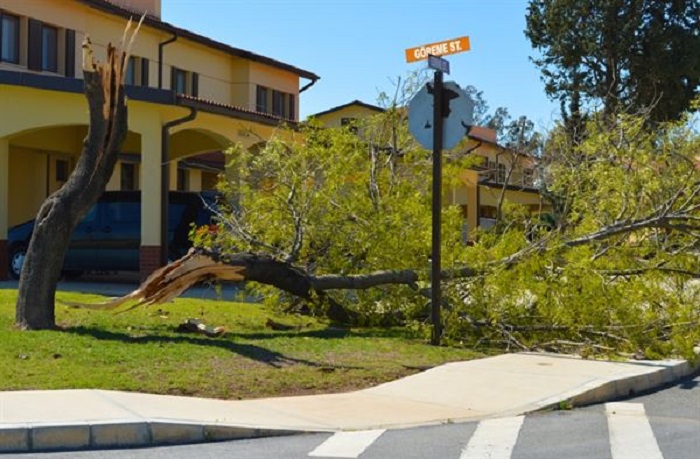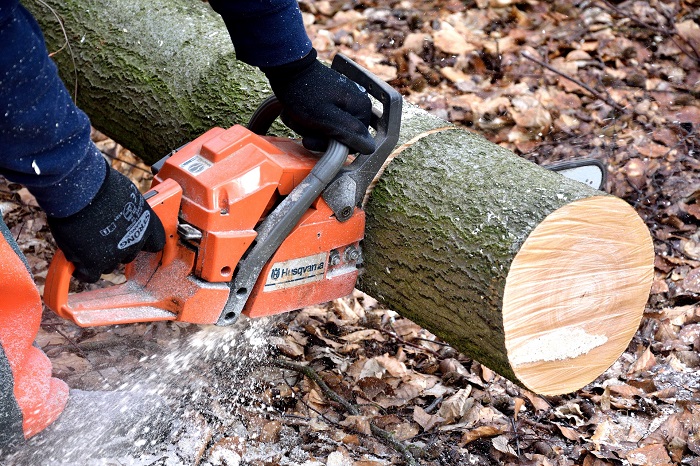
You may find yourself standing in your garden, looking around at a disarray of fallen trees. Perhaps the previous night’s storm caused this. You may become frustrated in this situation, but do not despair! Try to look at this situation as an opportunity, as opposed to a setback. Knowing how to utilize these fallen trees can help you earn money. Fallen trees can be used as a source of budget-friendly firewood, however, many people don’t know how to cut and split these trees. This article will shed some light on the topic.
1. Safety first
- Choose an appropriate location: The location should be large enough for you to freely chop and split the wood. Splitting firewood can be sweaty work, so choose a cool location with good airflow to keep yourself cool. The next step is to clear away any debris or anything that could potentially cause injury.
- Select an appropriate outfit: Appropriate clothing plays a crucial role in helping you to work efficiently. Never wear clothes that are too tight. Make use of high-quality gloves and solid work boots to protect your hands and feet. When you use a saw, hearing protection and a face shield are highly recommended.
- Prepare for an accident: Make sure that there is at least one person nearby who will be able to give first aid in case of an accident.
2. Cutting the trees

- Use a chainsaw to cut all the branches off the log. A 16-inch chainsaw is the desirable size, since it has the perfect combination of power and cutting speed. Remember to use a chainsaw sharpener to sharpen your chainsaw before cutting.
- Cut your wood to into manageable lengths. The length that you cut the logs to will depend on what you’re planning on using them for, as well as the size of your storage space. The shorter the log is, the easier it will be to split. In general, 16-20 inches (about 40-50 cms) is an suitable length for most woodstoves and fireplaces. Try to cut the pieces flat, since this will make it easier for you to stand them up and split them.
3. Splitting the logs

- Obtain a splitting maul: A maul, which looks like a cross between an axe and a sledgehammer, is the best tool for hand-splitting firewood. There is a wide range of maul sizes on the market, but the 6 or 8-pound maul is the one that you should buy. Using a good log-splitting maul will minimize the effort that you have to put into splitting logs.
- Stand the log on a chopping block: The chopping block should be 16 inches in height and at least 12 inches in diameter. Place your block on flat ground, ensure that it is stable, and place the log on top of it.
- Look for hairline cracks in the log. All you need to do is to run your blade in the same direction as the crack. This will mean that you have to put less effort into chopping.
- Mark the place where you want to split the log. Cut a small hollow into the wood to give yourself an indication of where to chop the log.
- Widen your legs and stand flexibly, so that your feet are as wide apart as your shoulders. If you are right-handed, hold the maul firmly with your left hand at the end of the handle, and place your right hand just below the head of the maul. Bend your knees slightly, raise the maul overhead, and extend your arms, keeping them straight. Slide your dominant hand down to your weaker hand, grab the end of the handle firmly, and move your wrists. Be decisive in your movements. Splitting logs is more about technique than strength. Gravity, rather than your strength, will do most of the work.
- If you can’t get the log to split on your first swing, or if the maul gets stuck, you can rock it slightly to get it out of the log. Once it is free, chop the log a second time along the crack. If the maul is firmly stuck in the log, hit the blade to the end of the maul.
- Stop splitting when your wood pieces are the desirable size. Arrange stacks of split wood in a shed,so that they stay dry, receive good air circulation, and are shielded from rain. This will prevent your wood from rotting.
When you are faced with fallen trees, take your time to think of potential uses for them, rather than seeing them as an irritation. Try to look at fallen trees as potential firewood, or even a medium with which decorative features can be created. If you choose to turn the trees into firewood, you now know how to cut and split the wood. Safety is the most important part of this process, so don’t forget your safety gear ,and choose an appropriate outfit for the job. A good-quality splitting maul, our technique for tree-splitting, and plenty of energy are the last factors that will ensure your success.

